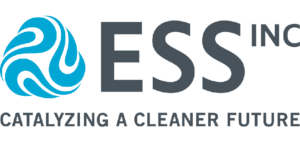If you would like to present a case study or be part of a panel session at our Energy Storage Summit USA 2026, then please get in touch with the team today.
In a move to Dallas, an industrial hub of Texas and a key center for oil and gas, it’s crucial to engage in future-shaping conversations on energy adoption. In 2024, the city was recognized as the largest local government user of green power in the nation and, as regional energy demand continues to soar, Dallas is the ideal location to launch the Energy Storage Summit USA 2025.
As the market sets another stellar year with the largest number of GWs deployed on record and begins to react to an increasingly competitive market, what have been the impacts of 2024 on market prospects, economics, and deployment of energy storage?
Join us for our opening address by Quentin ‘Q’ Draper-Scrimshire, CEO and Co-Founder of Modo Energy.
![]()
Many asset owners face significant challenges with integration, often leading to delayed CODs and increased project costs. It’s common for commissioning to extend six months or more after construction, adding time and expense to the process. However, there are ways for asset owners to drastically cut down commissioning times. In this presentation, TruGrid Chief Executive Officer Jody Snodgrass will share insights on how to streamline integration, using expert planning, advanced technology, and proven methodologies. The goal is to help asset owners reduce delays and improve project efficiency, ultimately accelerating returns on their energy investments
![]()
For those diversifying away from more established markets like CAISO and ERCOT, adopting new contracting structures is becoming an increasingly important consideration. With the rise of innovative models for grid-scale energy storage, it is crucial to understand and implement these new structures effectively. Join us to delve into the intricacies of structuring, cost of capital, and interest risk.
As cyber threats evolve, energy infrastructure must stay ahead of emerging risks. This session will explore key cybersecurity challenges in the energy sector, focusing on real-world vulnerabilities, regulatory trends, and strategies to build resilience. Join Michael Hudson, a cybersecurity leader with experience across critical infrastructure, as he discusses how organizations can proactively secure energy assets, mitigate supply chain risks, and navigate the future of cybersecurity in the evolving energy landscape.

Due to ongoing supply chain changes and potential tariff risks, building projects will look very different in 2025 compared to 2024. In May 2024, the Biden Administration proposed to triple tariffs paid on batteries and parts imported from China from 7.5% to 25%, providing a greater incentive for BESS manufacturers to source US-made cells in the coming years to benefit from domestic content tax credits. How has the industry reacted to the supply chain ‘stick’ alongside the Inflation Reduction Act ‘carrot’?
Zenobē has recently commenced operations at its Blackhillock energy storage site, with phase 1 – 200MW of a 300MW project – now complete. The site is the world’s first battery to provide Stability Services to overcome the challenges of transporting large amounts of offshore wind power to where it is needed on the UK grid. The site will lower consumer bills by over $220 million over 15 years and is a prime example of how innovative UK companies are developing new technical solutions using energy storage which could bring commensurate benefits to ISOs and grids in the US.
The grid-scale energy storage landscape in the U.S. is shifting fast, and risk reduction is at the forefront of every project decision. From supply chain uncertainties to regulatory challenges and financial risks, navigating these complexities is critical to ensuring bankable, long-term success.
Join Trina Storage energy expert, Mike Watson, as he takes the stage to discuss key strategies for de-risking energy storage investments. This session will explore how to build resilience in supply chains, mitigate financial uncertainty, and adapt to market and policy shifts — ensuring a more secure, profitable future for energy storage projects.
Key Takeaways:
Don’t miss this insightful session on navigating uncertainty and strengthening energy storage strategies in today’s evolving market.

VRFB technology is a safe and reliable option to provide long-duration energy storage greater than four hours to help ensure grid stability and facilitate increased utilization of renewables for businesses and consumers across the U.S. With proper maintenance, VRFBs can last more than 20 years without its electrolyte losing storage capacity. This longevity complements the lifespan of wind and solar installations. However, the upfront cost of VRFB systems poses a significant challenge to widespread adoption.
Vanadium electrolyte production is a key cost reduction target within the manufacturing scale-up challenge. The electrolyte is infinitely recyclable, and the battery offers a near-limitless cycle life. This component typically constitutes 40 percent to 60 percent of the bill of materials cost for VRFB systems. To address this hurdle, innovative business models, like vanadium electrolyte leasing, have emerged as promising solutions to accelerate commercialization. A cost-effective domestic supply chain for vanadium electrolyte will provide the opportunity for rapid adoption of VRFB technology, which has the potential to completely replace lithium in the utility arena in the next five years.
This presentation will outline the market demand for VRFB and how electrolyte leasing models are gaining popularity by creating a win-win proposition for both consumers and suppliers.
A year after our last discussion on market saturation, how will arbitrage values shift as more assets come online this year, and how will the June 89th legislative session alter rules, procedures and economics for BESS?

Is the industry leaving money on the table? A key consideration of BESS performance and real-time revenues lies in the calculation of the state of charge. Accuracy is the name of the game for those looking to predict asset revenue and avoid penalties.

Meet with investors and developers directly in this structured roundtable session. We will begin with quick-fire pitches from each investor on investment opportunities and partnerships they’re currently seeking. The audience will then split into smaller roundtable discussion groups where investors and developers can discuss business 1-2-1. Each round table will be hosted by an investor and developers will move around the room.
Registration is only available to developers and investors.

As utilities increasingly adopt energy storage solutions to enhance grid resilience and sustainability, ensuring the safety and cybersecurity of these systems becomes crucial. With rising geopolitical tensions, the focus on safeguarding Battery Energy Storage Systems (BESS) has intensified. Experts from EVLO Energy Storage will share their extensive experience in developing and deploying BESS for utilities and independent power producers. They will provide valuable insights into the latest best practices for maintaining safety and cybersecurity in BESS deployments. The discussion will cover comprehensive strategies, including robust physical safeguards; stringent cybersecurity protocols to prevent cyberattacks and data breaches, compliance with regulations and industry standards, and specialized training programs along with ongoing maintenance procedures to ensure the reliability and security of BESS installations.
![]()
Delve into the significant impact that system imbalance can have on power delivery and the overall reliability of BESS projects.
We will explore how Assured Balance™ technology from IHI Terrasun enhances the reliability of reported system capacity, minimizes balancing times, and maximizes the amount of reliably extractable power. Attendees will gain a comprehensive understanding of how balanced BESS systems can mitigate issues related to State of Charge (SOC) inaccuracies and improve the efficiency of power dispatch.
This session is essential for developers and operators looking to optimize their energy storage systems and ensure consistent, reliable power delivery. Don’t miss this opportunity to discover innovative solutions to common challenges in BESS operation.
![]()
With more than 2.6GWh of cumulative deployment in the US since 2020, CLOU will introduce its 5MWh AC containers integrated with string PCS, designed to provide optimal solution for developers and investor across the US markets. An integral part of CLOU’s advantage is CLOU’s in-situ active balancing, which operates autonomously during charging, discharging, or idle states. This innovation enables asset owners/operators to significantly reduce downtime and operational costs, boost revenue and profitability, and optimize optimizing battery lifespan and efficiency.
This session will appeal to developers, owners/operators, and investors looking to enhance ROI for energy storage systems by eliminating prolonged maintenance windows and maximizing asset utilization.

Hosted by Energy Storage Canada, join us to discuss the evolving energy storage market in Canada and the unique economics of energy storage projects.
PPAs and more, in this panel we will be keeping you up-to-date on the latest market trends for structuring offtake agreements.
SES AI is a leader in AI for energy storage and enhancing BESS safety and longevity through material discovery (Molecular Universe) and battery health monitoring (Avatar). Its Molecular Universe has mapped the physical and chemical properties of 10^8 molecules and counting, and is helping cell manufacturers to find new electrolyte molecules that can enhance cell safety and cycle life. Its Avatar can predict battery life based on anonymized manufacturing quality data alone, and precisely monitor battery health and predict incident throughout the entire operation lifetime.
![]()
Which market will ultimately win the hearts and minds of those looking to diversify into new regions? Vote for the winner in this interactive session.
Interact directly with representatives from regional ISOs and RTOs, Developers, and utilities, focusing on operability and dispatch issues, advanced storage modelling capabilities, market design and project bankability. We will begin with a scene-setting panel discussion, and delegates will then be able to join a market-specific discussion table to brainstorm problems around operability, lessons learned from existing deployments and products, modelling capacity and more.
If you are want to find out more about different jurisdictions and compensation for storage assets, this is the session for you.


Clarifying the implications of CAISO’s reforms on project timelines, risk management, and the overall feasibility of maintaining project pipelines in California’s increasingly competitive interconnection environment.
Join TruGrid and the team at the annual ‘Beers and Batteries’ networking drinks, where you can unwind after a full day of learning and networking. Enjoy live music, great food, and beverages—open to all delegates!
As part of the festivities, TruGrid will also host the Energy Storage USA Awards to recognize the brightest and best pioneers in the industry. It promises to be a relaxed, fun evening where you can connect with peers while celebrating innovation in energy storage.
Celebrate with us as we present awards for:

Wrap up day one of ESS USA with Modo Energy at the official After-Party. Open bar, scratch-kitchen bites, classic games, and exclusive Modo Energy merch you won’t want to miss!
Location: Sidecar Social, 5100 Belt Line Road
More information here: https://lu.ma/vu6f0g2f
![]()
An overview of new policy and regulation for long-duration technologies and their commercial use case.
Data centers are upending load growth expectations from ISOs and utilities alike, however, much of this load is currently speculative. Investors need a rational expectation of future load growth formed by available transmission and new supply additions. The most sophisticated energy storage investors are determining where storage fits into the data center boom and how they can optimize their bidding strategies to maximize revenue and reduce grid emissions.

Have the chance to ask our expert panel your questions regarding tax equity and transferability.
Last year’s OCED funding announcement has certainly given the industry a jumpstart, however, what specifics need to be taken into consideration as the program progresses and where might we see the future of LDES? With more regulators eyeing LDES technology procurement targets to scale novel technologies, this panel will determine the future impact of such decisions on the wider energy storage industry.
Calculating the role of AI and software innovations in the modern BESS industry, focusing on effective integration with hardware, decision-making between in-house development and contractors, and the evolving standards and future landscape of the sector
The leading trading teams now rely on the predictive power of algorithmic bidding platforms, leveraging supervised and reinforced machine learning, to manage bidding for their energy storage assets. Changing market landscapes require these algorithms to flexibly shift between energy and ancillary products to maximize value. This session explores how traders are increasingly finding opportunities with DA and RT energy arbitrage.

Battery energy storage revenue is significantly affected by two factors: location and optimization. As ancillary markets saturate in ERCOT, the majority of battery revenue now comes from energy arbitrage, with significant variability for nodes across and, more importantly, within zones. Using our in-house analysis, we’ll illustrate the relative importance of location and optimization in delivering realized revenues. We’ll discuss how batteries underperform due to suboptimal dispatch and showcase the uplift possible through AI-driven optimization, and review the strategies behind the top-performing batteries in ERCOT. This session will equip attendees with knowledge on how to achieve the full potential of storage assets in an increasingly dynamic market.
![]()
With a 6GW by 2030 energy storage target for New York and NYSERDA-led solicitations for 4.7GW of storage across the utility-scale sector well underway, how far do regional mechanisms support storage bankability and what will this market look like in the near and long term?
Achieving ROI requires the consideration of a number of asset risks. Join us to explore the below challenges in detail.

Explosions and deflagrations in BESS are caused by off-gases during a thermal-runaway event. This presentation will review methods to mitigate these risks in accordance with NFPA 855 including NFPA 68, NFPA 69, and performance based-designs. We will also discuss updates related to the explosion portion of NFPA 855 including some challenges and limitations it presents.
![]()
This presentation will show you how to reduce costs and improve profitability by avoiding design, integration, commissioning, and operational mistakes.
![]()
The renewables first approach: How do battery economics reflect the hybrid model?
Over a lifecycle, the costs of dealing with degradation must be considered in the project’s base case. To do so, we must consider the balance in trade-off between near term and long-term costs.
This presentation will discuss the latest trends, headwinds, and tailwinds in the battery storage market related to revenue, pricing, domestic content, and tariffs.
![]()
Our energy landscape is dramatically transforming as the global demand for AI, machine learning, and cloud computing soars. The rapid proliferation of data centers is placing unprecedented pressure on our energy grids, with projections indicating a rise in electricity demand from 60 GW to 296 GW by 2030, according to forecasts by McKinsey.
Addressing tomorrow’s energy challenges calls for innovative solutions and outside-the-box thinking. Long-duration energy storage (LDES) solutions provide several answers to the energy challenges created by the current computing revolution. Join us for an engaging session to explore how ESS is helping customers meet this unprecedented demand with its first giga-watt scale and fully modular solution – designed to fit seamlessly into any landscape.

Behind-the-meter systems for large commercial and industrial users represent a smaller segment of the market, but interest in this area is steadily growing.

